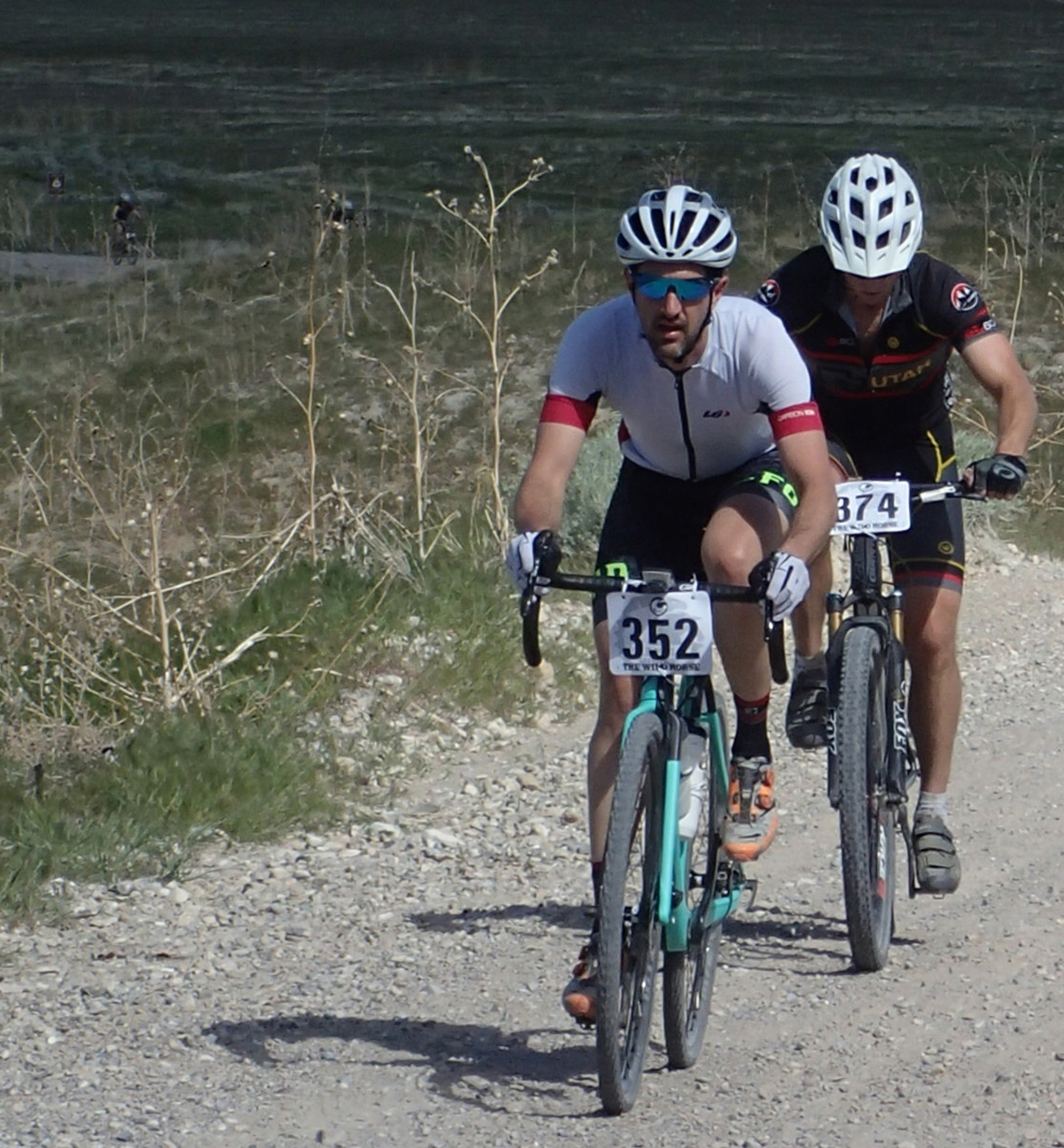By Chris Magerl — Bike tech is again catching up with riders’ desires. The past decade has seen far more riders taking to the unpaved roadways. Road bikes, mountain bikes, cyclocross bikes, all are a fun way to follow new routes. All have limitations.
[Editor’s Note: This piece appeared originally in Cycling Utah in April 2018.]
When you are headed out to explore mixed terrain, no matter which bike you are on, at some point you will have the wrong bike. That’s part of the fun.

In a recent visit to Salt Lake City, legendary bicycle designer Gerard Vroomen said that bigger tires marked the most exciting bicycle design change in the past 10 years. Vroomen was the master behind Cervelo, and created time trial bikes that won World Championships and Kona Ironmans, and road bikes that won the Tour de France as well as the cobbled classic Paris-Roubaix. But for him, the element that is driving cycling performance, exploration and enjoyment now is wide tires.
Vroomen’s Open and 3T frames give tires ample room and that encourages riders to roam. A bike like the Open U.P. has geometry that supports 700c x 28 tires or 27.5 x 2.1 MTB tires. A true go-anywhere ride. On a high-performance frame from a builder who has produced some of the most successful race bikes of the past fifteen years.
This is quite the change from even three or four years ago. Blog sites are littered with posts from riders struggling to find the right ride for the Dirty Kanza or the Crusher in the Tushar. Riders frequently chose to stuff the fattest CX tire into a CX race bike and hope for the best. Often that fattest tire that could fit was 33 or 35. And often that was really not enough.
For The Wild Horse, a dirt fondo of 76 miles or 31 miles held each May about 45 minutes west of SLC in the Cedar Mountain Wilderness, the bike tech was just not quite there. But options are now everywhere.
Cyclocross bikes are made for races that last 45 to 90 minutes. That is quite a bit different than riding for five hours with zero pavement. For the fastest riders at The Wild Horse, five hours is doable. For most average finishers, six to seven hours is more realistic.
Todd Henneman of Storm Cycles in Park City knows gravel, having ridden the Crusher and the past two editions of The Wild Horse. “My personal pick for the past two years of The Wild Horse has been a gravel type bike that will take wide tires. At least a 45 width,” Henneman said.
Eric Flynn of Flynn Cyclery in Holladay is also a Wild Horse veteran. He likes the new offerings that mix performance road geometry with larger tire clearance. “Anything similar to the Norco Search XR or the Open U.P./U.P.P.E.R will provide a rider with the options needed for a course like the Wild Horse. They’ll both allow 700c up to at least 40mm and a 48mm with the Norco. Both bikes also have the ability for a 27.5″ wheel with up to a 2.1″ in width for anything you could put in front of the two be it 2 track beat up jeep road or straight up single track.”
For both Henneman and Flynn, advise keeps returning to tire selection. “Some of the newer gravel bikes will accept up to 2.1 mountain bike tires. The Wild Horse has so much diversity that a standard cyclocross bike just doesn’t cut it. Most ‘cross bikes will only go up to about a 35 or 38 width tire. Those skinny tires are nasty in the rocky and soft sections of the course!” said Henneman. “My main concern with a bike out there is tire size! Don’t take a bike that will only do a 32 or 35 tire.”
Flynn urges riders to choose a tire suited for the tougher parts of the course “The west side of the course is where a larger volume tire is going to really shine. The gains made from having the efficiency and comfort on the west side of the course will pay big dividends when you get to the east side where all you’ve got to do is put the pedal down and rally back to the finish line.”
Gravel-specific bikes are great, but Henneman also sees the benefit of a hardtail mountain bike. “Preferably a 29er. Mainly for the tire size and width. Having a suspension fork is also nice in several sections of the course. Any lightweight XC race bike would be a safe bet,” Henneman said.
Flynn has raced The Wild Horse on bikes that seem the opposite ends of the spectrum. “I’ve done The Wild Horse on a full suspension mtb and a ‘cross bike with 40mm tires. I was glad to have both but always wished I had another bike depending on where I was on the course.”
Flynn knows that bike selection only goes so far. “At the end of the day The Wild Horse is just going to be a hard day on the bike no matter what you’re riding. There’s nothing that’s going to make it easy. Do your best to prepare and just know you’re going to suffer regardless of what you’ve got underneath you.”







